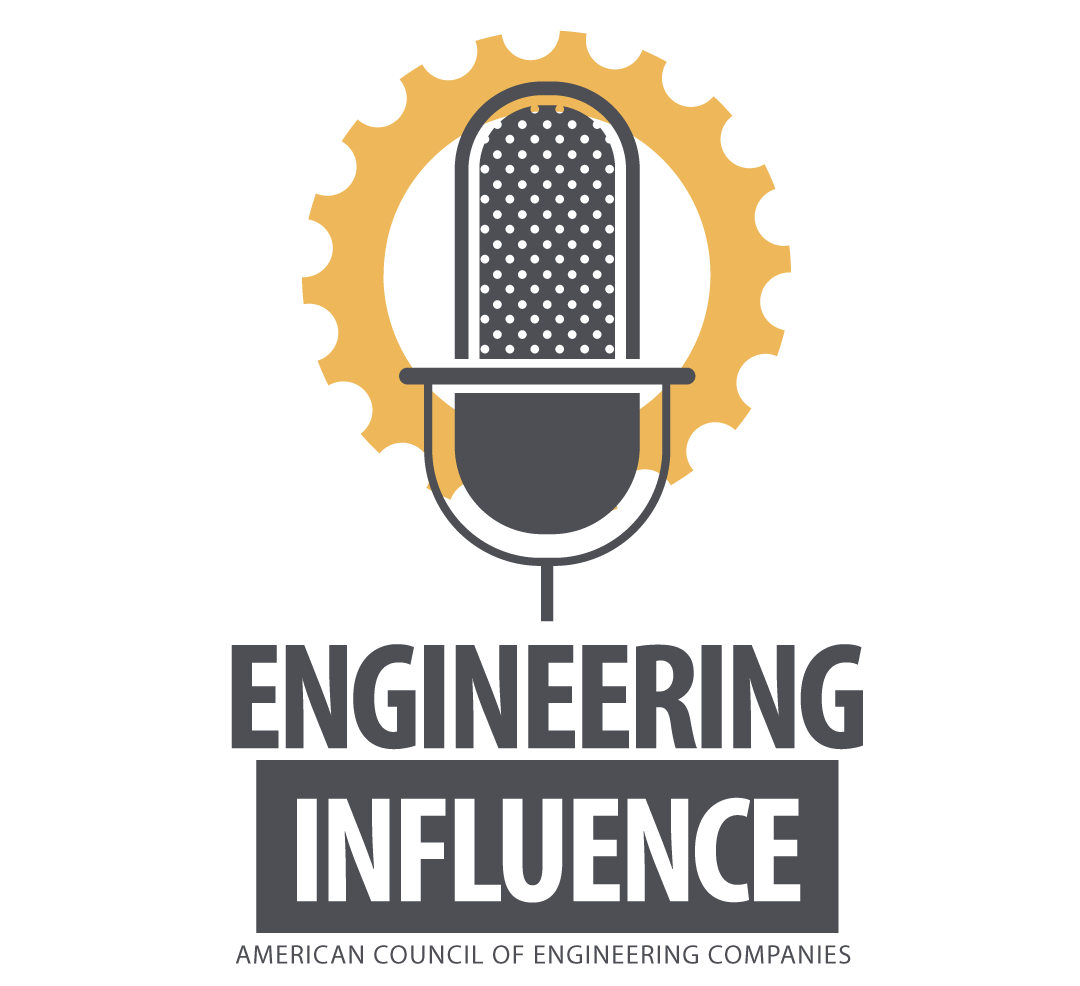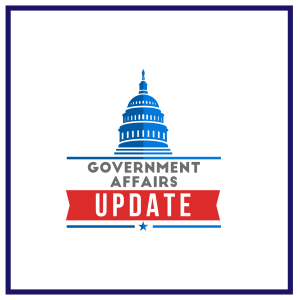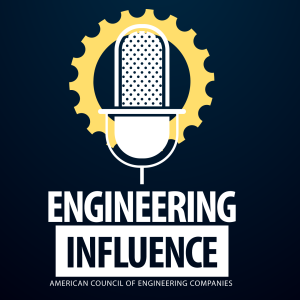
The Voice of the Business of Engineering
Engineering Influence is the official award-winning podcast of the American Council of Engineering Companies (ACEC).
ACEC is the trade association representing America's engineering firms; the businesses that design our built environment. Subscribe to the podcast for a variety of content ranging from interviews with newsmakers and elected officials to in-depth conversations on business trends, the economy, technology and what's next for the engineering and design services industry.
Visit us online at www.acec.org
Follow us on Twitter at @ACEC_National
ACEC reserves the right to moderate episodes on its channel and make editorial decisions on the inclusion or deletion of comments posted by listeners. Direct any questions to comms@acec.org.
Episodes

Friday Apr 09, 2021
Government Affairs Update for April 9, 2021
Friday Apr 09, 2021
Friday Apr 09, 2021
On today's update we preview the upcoming 2021 ACEC Virtual Annual Convention and Legislative Summit.

Friday Apr 02, 2021
Friday Apr 02, 2021
The podcast welcomed ACEC Board Chair Charlie Gozdziewski and Gayle Packer, president and CEO of Terracon Consultants onto the show to discuss the ACEC Research Institute's recent economic studies and the real world effects of infrastructure investment.

Friday Apr 02, 2021
Government Affairs Update for April 2, 2021
Friday Apr 02, 2021
Friday Apr 02, 2021
On today's Government Affairs Update, Matt Reiffer discusses the newly announced American Jobs Plan, President Biden's $2.25 trillion infrastructure bill.

Wednesday Mar 31, 2021
Mick Morrissey Discusses the Influx of Private Equity into Engineering Firms
Wednesday Mar 31, 2021
Wednesday Mar 31, 2021
Mick Morrissey, managing principal of Morrissey Goodale, a specialized management consulting and research firm serving the architecture, engineering, and environmental consulting industries, discusses the reasons behind the accelerating flow of private equity capital into engineering firms.

Friday Mar 26, 2021
The Government Affairs Update for March 26, 2021
Friday Mar 26, 2021
Friday Mar 26, 2021
On this week's Government Affairs Update, we're joined by Matt Reiffer to cover new congressional action on infrastructure. We also get into the issue of a return to earmarks in the House.

Tuesday Mar 23, 2021
Tuesday Mar 23, 2021
National Surveyors Week, March 21-27, aims to educate the public about surveying. Much of the focus of the week is in the schools, talking about the profession and getting students excited about a career in surveying.
On the program today, Joseph Romano, a principal at Langan Engineering and Environmental Services and chair of ACEC’s Coalition of Professional Surveyors, talks about National Surveyors week and the surveying sector.

Friday Mar 19, 2021
Government Affairs Update for March 19, 2021
Friday Mar 19, 2021
Friday Mar 19, 2021
On this week's episode, we welcome back Steve Hall to talk all things PPP including a preview of next Tuesday's Small Business Committee hearing on the FAR Credits Clause and a newly scheduled T&I hearing featuring Secretary Buttigieg on the Biden Administration's infrastructure agenda.

Wednesday Mar 17, 2021
Wednesday Mar 17, 2021
Matt Fultz, a principal at Matheson Financial Advisors, came on the program today to talk about firm valuations. We discuss the key factors in valuation, the steps to take to sell a firm, the most likely buyers, and why you might want to start the process today.
Matt recently presented an ACEC online class on valuation. Click here for the on-demand class.





